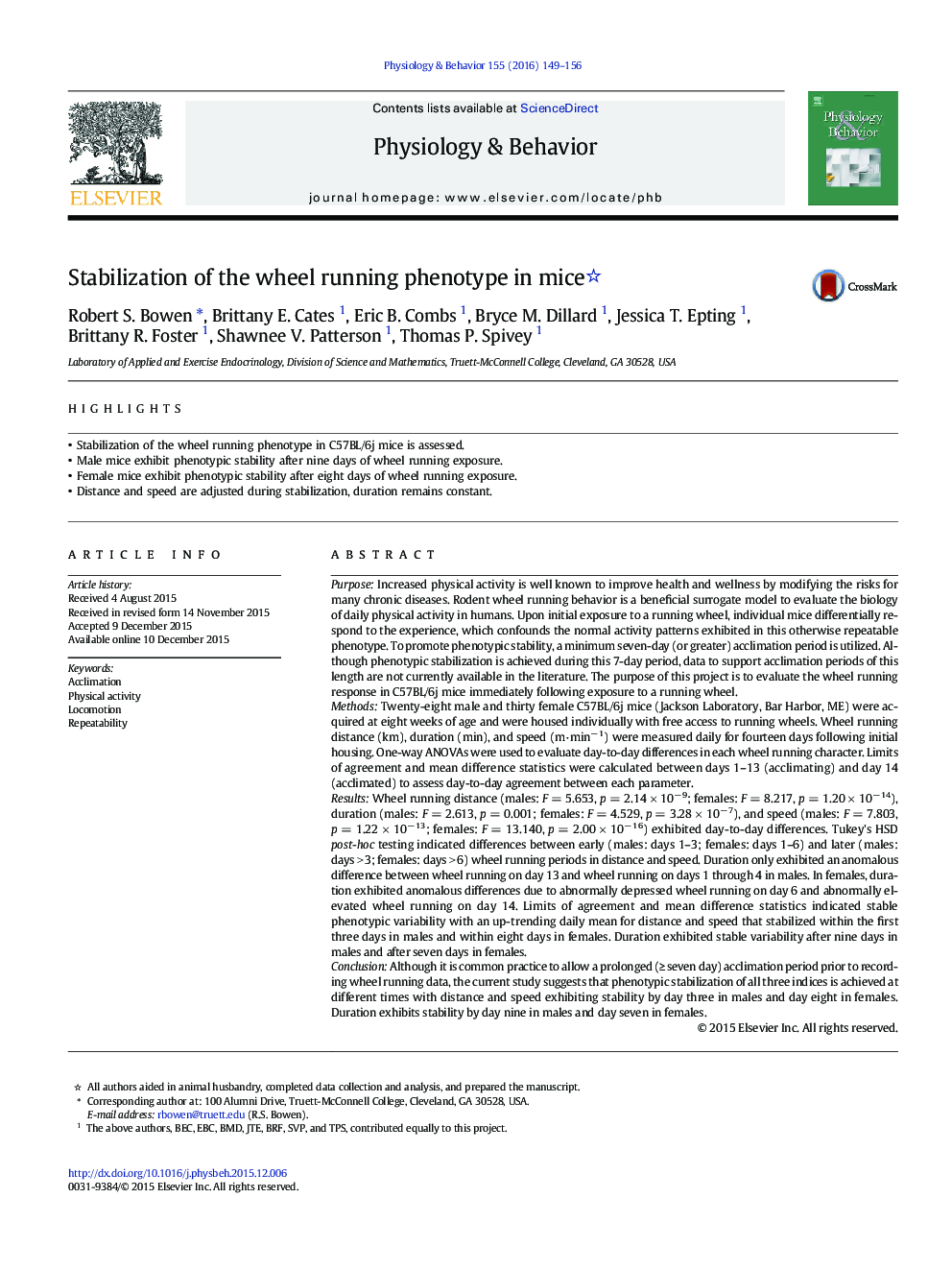| کد مقاله | کد نشریه | سال انتشار | مقاله انگلیسی | نسخه تمام متن |
|---|---|---|---|---|
| 2843980 | 1571163 | 2016 | 8 صفحه PDF | دانلود رایگان |
• Stabilization of the wheel running phenotype in C57BL/6j mice is assessed.
• Male mice exhibit phenotypic stability after nine days of wheel running exposure.
• Female mice exhibit phenotypic stability after eight days of wheel running exposure.
• Distance and speed are adjusted during stabilization, duration remains constant.
PurposeIncreased physical activity is well known to improve health and wellness by modifying the risks for many chronic diseases. Rodent wheel running behavior is a beneficial surrogate model to evaluate the biology of daily physical activity in humans. Upon initial exposure to a running wheel, individual mice differentially respond to the experience, which confounds the normal activity patterns exhibited in this otherwise repeatable phenotype. To promote phenotypic stability, a minimum seven-day (or greater) acclimation period is utilized. Although phenotypic stabilization is achieved during this 7-day period, data to support acclimation periods of this length are not currently available in the literature. The purpose of this project is to evaluate the wheel running response in C57BL/6j mice immediately following exposure to a running wheel.MethodsTwenty-eight male and thirty female C57BL/6j mice (Jackson Laboratory, Bar Harbor, ME) were acquired at eight weeks of age and were housed individually with free access to running wheels. Wheel running distance (km), duration (min), and speed (m ∙ min− 1) were measured daily for fourteen days following initial housing. One-way ANOVAs were used to evaluate day-to-day differences in each wheel running character. Limits of agreement and mean difference statistics were calculated between days 1–13 (acclimating) and day 14 (acclimated) to assess day-to-day agreement between each parameter.ResultsWheel running distance (males: F = 5.653, p = 2.14 × 10− 9; females: F = 8.217, p = 1.20 × 10− 14), duration (males: F = 2.613, p = 0.001; females: F = 4.529, p = 3.28 × 10− 7), and speed (males: F = 7.803, p = 1.22 × 10− 13; females: F = 13.140, p = 2.00 × 10− 16) exhibited day-to-day differences. Tukey's HSD post-hoc testing indicated differences between early (males: days 1–3; females: days 1–6) and later (males: days > 3; females: days > 6) wheel running periods in distance and speed. Duration only exhibited an anomalous difference between wheel running on day 13 and wheel running on days 1 through 4 in males. In females, duration exhibited anomalous differences due to abnormally depressed wheel running on day 6 and abnormally elevated wheel running on day 14. Limits of agreement and mean difference statistics indicated stable phenotypic variability with an up-trending daily mean for distance and speed that stabilized within the first three days in males and within eight days in females. Duration exhibited stable variability after nine days in males and after seven days in females.ConclusionAlthough it is common practice to allow a prolonged (≥ seven day) acclimation period prior to recording wheel running data, the current study suggests that phenotypic stabilization of all three indices is achieved at different times with distance and speed exhibiting stability by day three in males and day eight in females. Duration exhibits stability by day nine in males and day seven in females.
Journal: Physiology & Behavior - Volume 155, 1 March 2016, Pages 149–156
